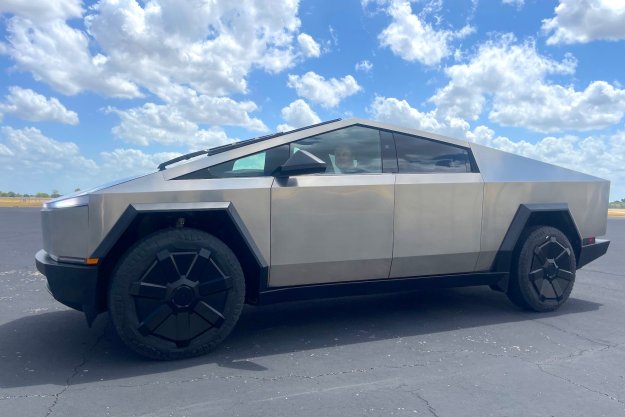Any new vehicle on the market today offers a suite of advanced driver assistance systems (ADAS) designed to warn you, actuate emergency braking, and generally help you avoid collisions, or mitigate collision damage. Features like forward collision warning, automatic emergency braking, lane departure and lane keeping assistance, and road departure mitigation all feed information to your car to help keep you safe.
But what about the vast majority of cars on the road that predate these features? According to the U.S. Bureau of Transportation Statistics, the average age of a car on the road today is 11.6 years and rising. In 1969 the average was just over five years. The increased lifespan of cars is a result of increased build quality and reliability, but it means that most cars on the road were made before modern safety features became available.
“In research studies take we participated in, it takes anywhere from three quarters of a second to a second and half for a driver to recognize what’s happening on the road and be able to react,” stated Jason Palmer, chief operating officer of SmartDrive Systems. “In a course of a collision, it can happen in a short number of seconds. That timing is critical.”
Enhancing Commercial Driver Safety
SmartDrive, based in San Diego, California, is designing systems that allow commercial vehicle operators to enhance driver safety in their existing fleets.
“We are focused on video-based safety programs for commercial vehicles,” Palmer told Digital Trends. “We install up to eight cameras in a vehicle, along with sensors, and we connect it into the computer. We’ve tuned a series of algorithms that identify situations where we think the truck or commercial vehicle is not in a safe situation or is not being operated efficiently. We’ll capture data, video, and audio. Then it goes to one of our driving analysts.”

Using the information collected, SmartDrive analysts can create simulations and training that helps a driver improve his or her performance.
“We typically will get anywhere from 50% to as much as 70% improvement in collision frequency reduction and safety.”
“We analyze all that data, the videos, audio, and different information, and add the context of what’s happening in that particular event, and that goes into the driver’s performance profile,” Palmer explained. “From that we can develop coaching programs and training for the driver. If they’re not merging safely into traffic, or they’re following too close, we help the client prescribe training to improve how the driver operates. As a result, we typically will get anywhere from 50 to as much as 70 percent improvement in collision frequency reduction and safety.”
Developing Autonomous Commercial Fleets
SmartDrive is also using its tech to help companies, universities, and government agencies evaluate and develop self-driving commercial vehicles.
“We help them to understand the type of risk that’s out there, what they’re going to see, and at what frequency,” Palmer said. “Because we capture so many events, we can help them understand things that they’re not really thinking about yet. For example, if they’re testing in Silicon Valley, if they’re deploying in Austin or in Florida, we can help them understand what’s going to be different about operating in those different areas.”
SmartDrive uses the data gleaned from millions of miles of observation to create machine learning as well as human training.
“We’re one of the first companies out there really to develop the content for simulations to help autonomous vehicle companies not only understand the risk on the road, but then be able to test their model against that,” Palmer stated. “And then we take it one step further. As they start to deploy vehicles out on the road, they’ll install our equipment in those vehicles and capture how the autonomous functions are operating.”
Bringing ADAS to Your Car with Intel’s Mobileye
Mobileye is an Intel subsidiary that offers an aftermarket ADAS system that can be installed in almost any vehicle. The Mobileye system provides forward collision warnings with nearby cars, trucks, or motorcycles, plus pedestrian and cyclist detection and warning. The system includes lane departure warnings and traffic sign recognition as well as a current speed limit display. Finally, the Mobileye system also gauges following distance and warns the driver if the distance is not safe for the current speed.

As an example of the benefits to regular passenger traffic, Ambu-Trans Ambulette, a medical ride service serving New York City, installed Mobileye technology on its fleet of existing passenger cars in 2015. The company has seen a dramatic reduction in collisions in its 70-vehicle fleet.
The company reported reduced collision frequency, down to just five or six incidents a year.
Prior to installing Mobileye technology, Ambu-Trans averaged about 35 to 50 crashes a year. After installing Mobileye’s collision avoidance technology across its entire fleet, the company reported reduced collision frequency, down to just five or six incidents a year, with a 95% reduction in collision-related costs.
“This is beyond anything I expected,” stated Neal Kalish, the president and owner of Ambu-Trans. “We believe every vehicle on the road should be equipped with it.”
Companies as varied as bus operators and garbage truck fleets have installed Mobileye systems and seen safety benefits as a result. In all, over 30 million vehicles worldwide carry Mobileye tech. A Mobileye system appropriate to a passenger car is little bigger than a dash camera and retails for about $1,000.


